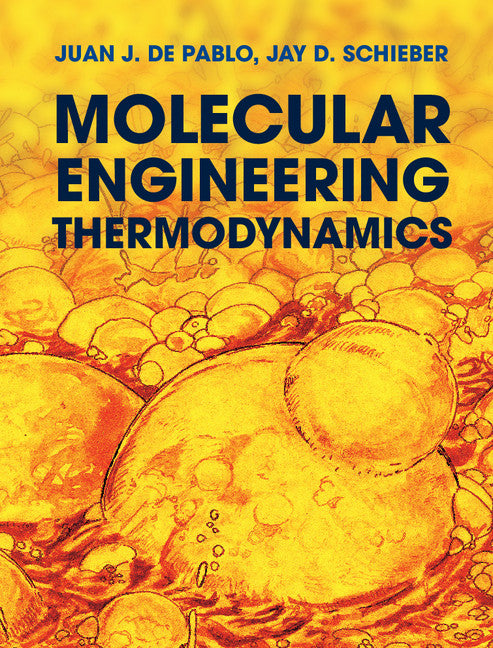Freshly Printed - allow 6 days lead
Couldn't load pickup availability
Molecular Engineering Thermodynamics
A unique introduction to modern thermodynamics, integrating classical, statistical and molecular approaches, designed for students studying chemical and biochemical engineering.
Juan J. de Pablo (Author), Jay D. Schieber (Author)
9780521765626, Cambridge University Press
Hardback, published 10 July 2014
501 pages, 132 b/w illus. 310 exercises
25.3 x 19.5 x 2.7 cm, 1.22 kg
'[This book] … is both sensible and innovative. [De Pablo and Schieber] use a postulational approach to present the basic ideas of the subject, which, I believe, is the best way to teach equilibrium thermodynamics, since it is clear and concise. Their book is also important because they show how thermodynamics can be used to attack problems involving chemical reaction equilibria, properties of polymer solutions and blends, and surfaces and interfaces. They also make it clear how thermodynamics may be applied to engineering flow systems (which are not at equilibrium). A chapter on statistical mechanics shows how molecular ideas fit into the subject of thermodynamics.' R. Byron Bird, University of Wisconsin, Madison
Building up gradually from first principles, this unique introduction to modern thermodynamics integrates classical, statistical and molecular approaches and is especially designed to support students studying chemical and biochemical engineering. In addition to covering traditional problems in engineering thermodynamics in the context of biology and materials chemistry, students are also introduced to the thermodynamics of DNA, proteins, polymers and surfaces. It includes over 80 detailed worked examples, covering a broad range of scenarios such as fuel cell efficiency, DNA/protein binding, semiconductor manufacturing and polymer foaming, emphasizing the practical real-world applications of thermodynamic principles; more than 300 carefully tailored homework problems, designed to stretch and extend students' understanding of key topics, accompanied by an online solution manual for instructors; and all the necessary mathematical background, plus resources summarizing commonly used symbols, useful equations of state, microscopic balances for open systems, and links to useful online tools and datasets.
1. Introduction
2. The postulates of thermodynamics
3. Generalized thermodynamic potentials
4. First applications of thermodynamics
5. Application to process design: flow systems
6. Statistical mechanics
7. Molecular interactions
8. Fugacity and vapor-liquid equilibrium
9. Activity, vapor-liquid, and liquid-liquid equilibrium
10. Reaction equilibrium
11. Thermodynamics of polymers
12. Thermodynamics of surfaces
Appendix A. Mathematical background
Appendix B. Fluid equations of state
Appendix C. Microscopic balances for open systems
Bibliography
Index.
Subject Areas: Materials science [TGM], Mechanical engineering & materials [TG], Chemical engineering [TDCB], Biochemical engineering [TC], Technology, engineering, agriculture [T], Chemistry [PN], Mathematics & science [P]


